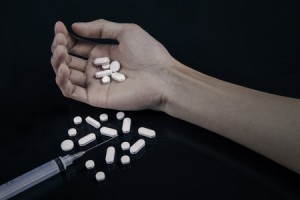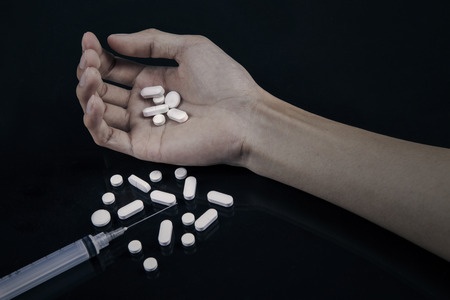
I’m almost positive that a guy I saw was high on Flakka. I’d been to Fort Lauderdale Florida for a training conference on relapse prevention. The conference finished early on Friday, so my friend and I decided to catch lunch down by the beach. We were getting a recommendation for lunch from a woman renting Segways, when a man walked by. He was barefoot, shirtless and wearing sweat pants cut off at the knees. He was also busy arguing with someone who wasn’t there. He walked right by us, caught up in his own world.
The reason I suspected he was high on Flakka, was because Fort Lauderdale is in Broward County Florida, which has been ground zero for Flakka. After I commented that I thought the guy was on Flakka, the woman told us that Clearwater was where most of the Flakka problems were at the time. She added that people high on Flakka usually kept to themselves and weren’t violent or aggressive. Then she added that Flakka caused problems because it opened (or activated) the third eye and users were then able to see into the future. We thanked her for her lunch recommendation and left. The guy on Flakka had moved on as well.
We are entering a brave new world of mind-altering substances with NPS—new psychoactive substances—coming to market faster than governments around the world can ban them. See “The New Frontier of Synthetic Drugs” and the “2014 Global Synthetic Drugs Assessment” for more information on the growing problem with NPS. Synthetic cannabinoids (synthetic marijuana), with names like K2 and Spice, are available everywhere. Sold online or in small retail outlets like convenience stores (I’ve heard there’s one that sells it within a mile of my home), synthetic marijuana is popular among younger drug users. After cannabis, synthetic marijuana was the most frequently reported illicit substance used by teenagers in 2012. No longer is finding a pipe in a teenager’s jeans an automatic indication that they are smoking cannabis, the marijuana of their parents’ generation.
The Synthetic Drug Abuse Prevention Act (SDAPT) was signed into law in 2012, but keeping up with the ever-changing chemical formulas used in the manufacturing process is difficult. “The chemical compositions of synthetic drugs are frequently altered in an attempt to avoid government bans.” SDAPT permanently placed 26 types of synthetic cannabinoids and cathinones into Schedule 1. The total number of NPS identified in 2012 was 158.
A CDC report in 2012 said that multiple states found there was an association between synthetic marijuana and unexplained acute kidney injury that was diagnosed after severe nausea, vomiting and flank or abdominal pain brought them to emergency departments. Additional side effects can include tachycardia (faster than normal heart rate) and hypertension.
Synthetic cannabinoid compounds originally were developed to facilitate study of cannabinoid receptor pharmacology, but in recent years have emerged as drugs of abuse. In 2005, SC products marketed as “Spice” first emerged in European countries, before appearing in the United States in 2009, where they were marketed initially as “K2.” Today, SC products are distributed worldwide under countless trade names and packaged in colorful wrappers designed to appeal to teens, young adults, and first-time drug users. Products often are packaged with disingenuous labels such as “not for human consumption” or “incense,” but health professionals and legal authorities are keenly aware that these products are smoked like marijuana. Despite federal and state regulations to prohibit SC sale and distribution, illicit use continues, and reports of illness are increasing.
A 2015 CDC report indicated that poison control centers had 3,572 calls related to synthetic cannabinoid use, which was a 299% increase over the same January-May period in 2014. The number of calls spiked in mid-April before decreasing to 2014 levels by the end of May. The number of reported calls stayed under 100 all throughout 2014. They rapidly increased to 500 calls by April 16th and did not decrease to near 100 until May 28th. See the figure in the 2015 CDC report.
The most commonly reported adverse health effects were: agitation (35.3%), tachycardia (29.0%), drowsiness or lethargy (26.3%), vomiting (16.4%), and confusion (4.2%). Eighty-three percent of the poison center calls had a medical outcome and 11.3% of those had a major adverse event—signs or symptoms that were life threatening or that could in substantial disability or disfigurement. There were 1,407 (47.5%) with a moderate effect—signs or symptoms were not life threatening, and no threat of disability or disfigurement, but did require some form of treatment. “A total of 1,095 (37.0%) had a minor effect (signs or symptoms that are minimally bothersome and generally resolve rapidly with no residual disability or disfigurement).” Fifteen deaths were reported.
This is a fast growing problem and we can’t afford to see it get out of hand. Synthetic cannabinoids were first reported to be in the US in December of 2008 when a shipment of “Spice” was seized by U.S. Customs and Border Protection in Dayton, Ohio. And now, the CDC is saying: “The increasing number of synthetic cannabinoid variants available, higher toxicity of new variants, and the potentially increased use as indicated by calls to poison centers might suggest that synthetic cannabinoids pose an emerging public health threat.”





